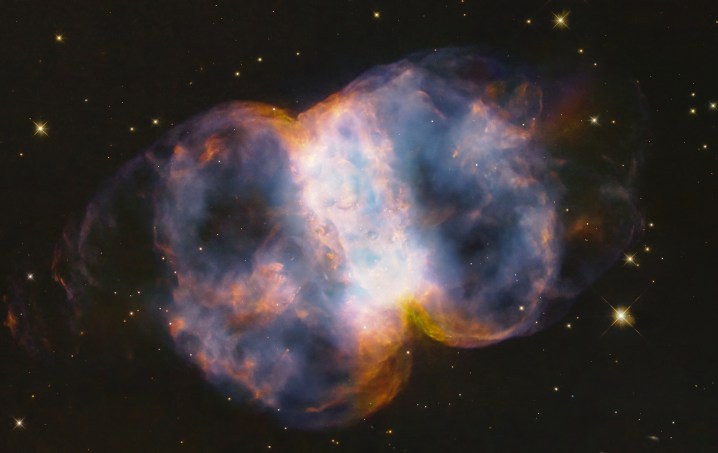Celebrate Hubble’s thirty fourth birthday with this attractive nebula picture

Tomorrow, April 24, marks the thirty fourth anniversary of the launch of the Hubble Space Telescope. For greater than three a long time, this venerable outdated telescope has been peering out into space, observing stars, galaxies, and nebulae to know extra in regards to the universe we dwell in. To have a good time this birthday, Hubble scientists have shared a brand new picture exhibiting the putting Little Dumbbell Nebula, also referred to as Messier 76, which is situated 3,400 light-years away.

The nebula takes its title from its double-lobed form, with two areas of colourful gasoline glowing in a balloon-like construction that’s pinched within the center like a dumbbell. The form is created by a star within the middle, seen solely as a white dot, which has come to the tip of its life as a purple large and threw off layers of mud and gasoline. These layers traveled outward, creating the shell-like form of every of the lobes. The gasoline glows due to ultraviolet radiation given off by the star within the middle, which is among the hottest stellar remnants identified at an unbelievable 250,000 levels Fahrenheit, or 24 instances the floor temperature of the solar.
Scientists suppose that this dying star as soon as had a companion star, which affected the way in which the shell of mud and gasoline developed. Although this companion is not seen, suggesting it could have been swallowed up by the purple large, it might have created a hoop construction, which created the central pinch level of the lobes.
This stunning construction received’t final for lengthy, nonetheless, because the shells of mud and gasoline will fade over time and the nebula will disappear in round 15,000 years. To seize it whereas it’s nonetheless seen, Hubble used its Wide Field Camera 3 instrument to look at the thing in 5 completely different wavelengths. That permits scientists to detect the presence of explicit parts, with purple within the picture representing nitrogen, for instance, and blue representing oxygen.











